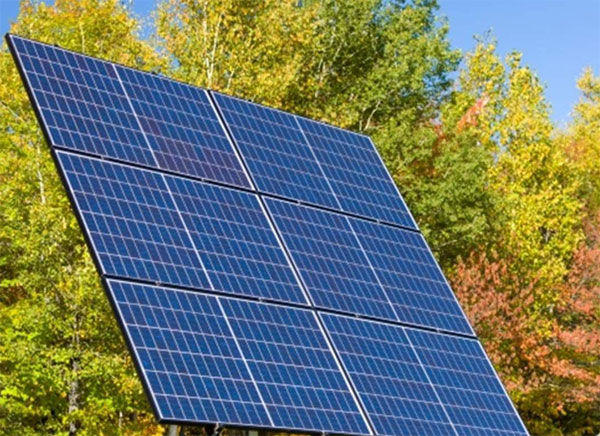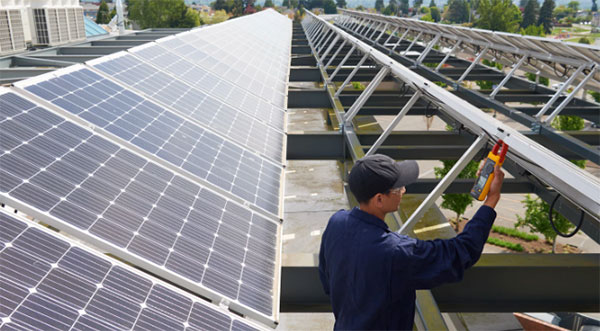Description
Higher wattage solar panels offer greater efficiency and space optimization, ideal for limited space but come with higher costs.
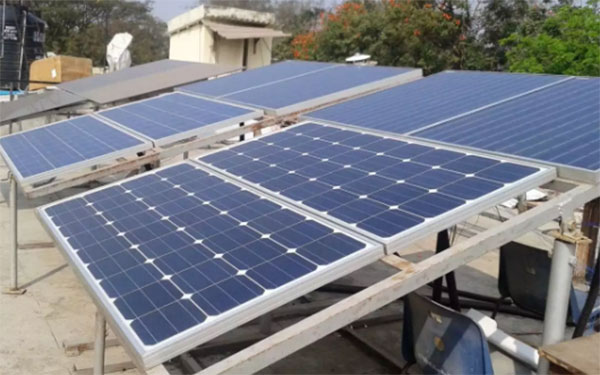
Benefits of Higher Wattage Solar Panels
Increased Energy Efficiency
Higher wattage solar panels are synonymous with improved
energy efficiency. These panels generate more electricity per square foot than their lower wattage counterparts, making them ideal for maximizing energy output, especially in limited space. For instance, a 300-watt panel will produce more electricity in the same amount of space than a 200-watt panel. This efficiency is particularly beneficial for rooftops with restricted space, ensuring that every inch contributes significantly to energy production.
Space Optimization for Solar Installations
Space optimization is a key advantage of higher wattage panels. By delivering more power per panel, they reduce the need for extensive installation space. This makes them a perfect solution for urban settings or small rooftops, where space is at a premium. A smaller number of high-wattage panels can achieve the same energy output as a larger number of low-wattage panels, leading to a more compact and aesthetically pleasing solar array.
Long-term Cost Savings
Investing in high wattage solar panels leads to notable
long-term cost savings. Although the initial purchase and installation costs might be higher, the increased efficiency means more energy production over the lifespan of the solar system, resulting in significant savings on electricity bills. Moreover, high wattage panels often have a longer lifespan, translating to extended periods of efficient energy production and minimal need for replacement or maintenance. For example, if a high-wattage panel generates 20% more electricity than a standard panel, this translates into substantial savings over the 25 to 30-year lifespan of the panel.
Detailed Analysis of Benefits
High Wattage Means High Efficiency: Linking wattage to efficiency, high wattage panels operate at a higher efficiency level. A panel with a higher watt rating will produce more kilowatt-hours (kWh) of electricity under the same conditions than a panel with a lower watt rating. This is a crucial factor in regions with limited sunlight hours or in winter months when the sun is less intense.
Space-Saving Solar Solutions: The compact nature of high wattage panels solves many spatial challenges faced in urban solar installations. These panels maximize energy production in smaller areas, making solar power more accessible and feasible for urban dwellers or those with smaller homes.
Reducing Long-Term Expenses: The initial investment in high wattage solar panels is offset by the long-term reduction in electricity costs. The enhanced efficiency means that over time, the cost per watt of electricity produced is lower compared to lower wattage panels. This makes high wattage panels a cost-effective solution, especially when considering the rising costs of traditional energy sources.
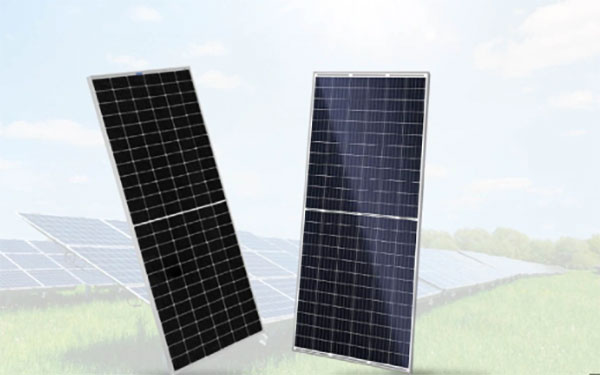
Considerations When Choosing Solar Panel Wattage
Selecting the right wattage for solar panels is a crucial decision that impacts the efficiency and cost-effectiveness of the solar power system. Understanding specific energy needs, the size and orientation of the roof, and the compatibility with existing systems are key factors.
Assessing Energy Needs
The first step in choosing the right solar panel wattage is to assess your energy needs. This involves:
- Calculating Average Daily Power Consumption: Review electricity bills to determine your average daily kWh usage. For example, if your household consumes 30 kWh per day, you'll need panels that can produce this amount of energy under average conditions.
- Anticipating Future Energy Needs: Consider potential increases in energy usage, such as purchasing an electric vehicle or adding new home appliances, which could necessitate higher wattage panels.
Roof Size and Sunlight Exposure
The physical constraints and sunlight exposure of your roof play a significant role in determining the appropriate panel wattage:
- Measuring Roof Area: Determine the total usable area for solar panels. A smaller roof may require higher wattage panels to meet energy needs.
- Analyzing Sunlight Patterns: Consider the amount of direct sunlight your roof receives. In areas with less sunlight, higher wattage panels can compensate for lower solar irradiance.
- Orientation and Tilt of Roof: The roof's orientation towards the sun affects the amount of sunlight panels receive. South-facing roofs in the Northern Hemisphere typically receive more sunlight.
Compatibility with Solar Inverters and Battery Storage
Ensuring compatibility with existing systems is essential:
- Inverter Specifications: The inverter's wattage capacity should match or exceed the total wattage of your solar panels. For example, a 5kW inverter can handle up to 5000 watts of solar panels.
- Battery Storage Capacity: If using a solar battery storage system, ensure it can handle the output from your chosen panels. A higher wattage panel system will require a battery with a higher storage capacity to fully utilize the generated energy.

Challenges and Limitations
When considering higher wattage solar panels, it's important to be aware of certain challenges and limitations that may affect their suitability for specific applications.
Higher Initial Investment Costs
High wattage solar panels often come with a higher price tag. This increased cost can be a significant consideration for homeowners and businesses:
- Comparing Prices: The cost per watt of high wattage panels can range from $0.70 to $1.50, depending on the brand and technology. This is higher compared to standard panels, which may cost between $0.50 to $1.00 per watt.
- Overall Budget Impact: The total cost of a solar installation includes not just the panels, but also inverters, mounting systems, and labor. Higher wattage panels can increase the overall budget considerably.
Weight and Installation Considerations
The physical characteristics of high wattage solar panels can pose installation challenges:
- Heavier Panels: High wattage panels are generally heavier than standard panels. For instance, a high wattage panel might weigh around 50-60 pounds, compared to 40-50 pounds for a standard panel.
- Structural Requirements: The additional weight requires careful consideration of the roof's structural integrity. Older buildings may need additional reinforcement.
Potential Oversizing for Small-scale Needs
Choosing the right size for your solar system is crucial, and there's a risk of oversizing with high wattage panels:
- Energy Production vs. Consumption: If the solar system produces significantly more energy than needed, it could lead to inefficiencies and wasted investment.
- Feed-in Tariff Considerations: In regions where excess solar energy is sold back to the grid, the compensation rate may not always justify the cost of an oversized system.
Technological Advances in High Wattage Solar Panels
The solar industry has witnessed significant technological advancements, particularly in high wattage solar panels, which have enhanced their efficiency and lifespan.
Innovations in Solar Cell Efficiency
Recent breakthroughs in solar cell technology have significantly boosted the efficiency of high wattage panels:
- Advanced Photovoltaic Materials: Researchers are exploring materials like perovskite, which offers higher efficiency rates than traditional silicon. These materials can convert more sunlight into electricity, with efficiencies potentially exceeding 30%.
- Bifacial Solar Panels: These panels can capture sunlight from both sides, increasing energy production by up to 20% compared to traditional panels.
- Improved Anti-Reflective Coatings: These coatings enhance light absorption and minimize losses, pushing the efficiency boundary further.
Developments in Durability and Lifespan
The durability and lifespan of high wattage solar panels have also improved:
- Robust Panel Design: Modern panels are designed to withstand harsh environmental conditions, like heavy snowfall and high winds. For instance, some panels are rated to endure wind uplift of up to 2400 Pa and snow loads of up to 5400 Pa.
- Enhanced Degradation Rates: Solar panels traditionally experience a degradation rate of about 0.5% per year. New technologies have reduced this rate to as low as 0.3% per year, extending the panels' effective lifespan.
- Use of Quality Materials: High-grade materials such as tempered glass and corrosion-resistant frames contribute to the longevity of the panels.
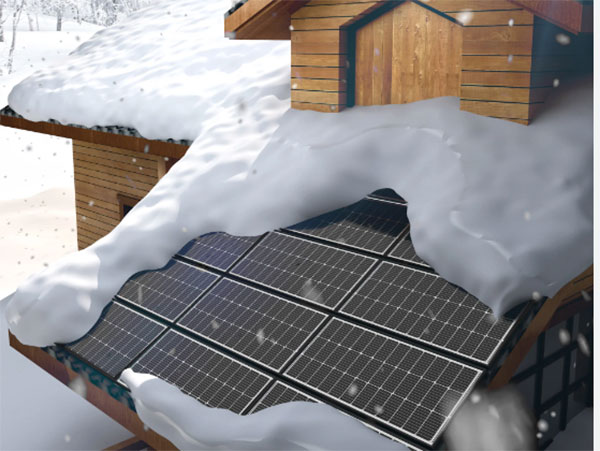
Real-World Applications and Case Studies
High wattage solar panels are increasingly used in diverse settings, from residential homes to large-scale commercial projects. Understanding their real-world applications, including how they perform in different geographic locations, is essential for evaluating their practicality and efficiency.
Residential vs. Commercial Usage
The application of high wattage solar panels varies significantly between residential and commercial settings:
- Residential Applications:
- Roof Size and Layout: Residential roofs are often smaller and may have irregular shapes, requiring efficient use of space. High wattage panels can maximize energy production in these limited areas.
- Energy Consumption Patterns: Typical household energy consumption ranges from 20 to 30 kWh per day. A system with high wattage panels can meet these needs with fewer panels, reducing installation costs.
- Commercial Applications:
- Large Scale Energy Needs: Commercial buildings often have higher energy requirements. For example, a small business might consume 200 kWh per day.
- Spacious Roofs and Ground-Mounted Systems: Commercial properties usually have more space for solar installations, allowing for larger arrays of high wattage panels.
Geographic Variations in Efficiency
The efficiency of high wattage solar panels can vary significantly based on geographic location:
- Sunlight Intensity: Areas closer to the equator, like the Sahara Desert, receive more direct sunlight, enhancing the efficiency of solar panels.
- Temperature Impact: Solar panels, including high wattage types, can be less efficient in extremely hot climates, as high temperatures can reduce their operational efficiency.
- Case Study: In Germany, a country with moderate sunlight, high wattage panels have been used effectively to maximize energy production even during shorter daylight hours. Conversely, in sunny Arizona, these panels can produce significantly more energy throughout the year.






